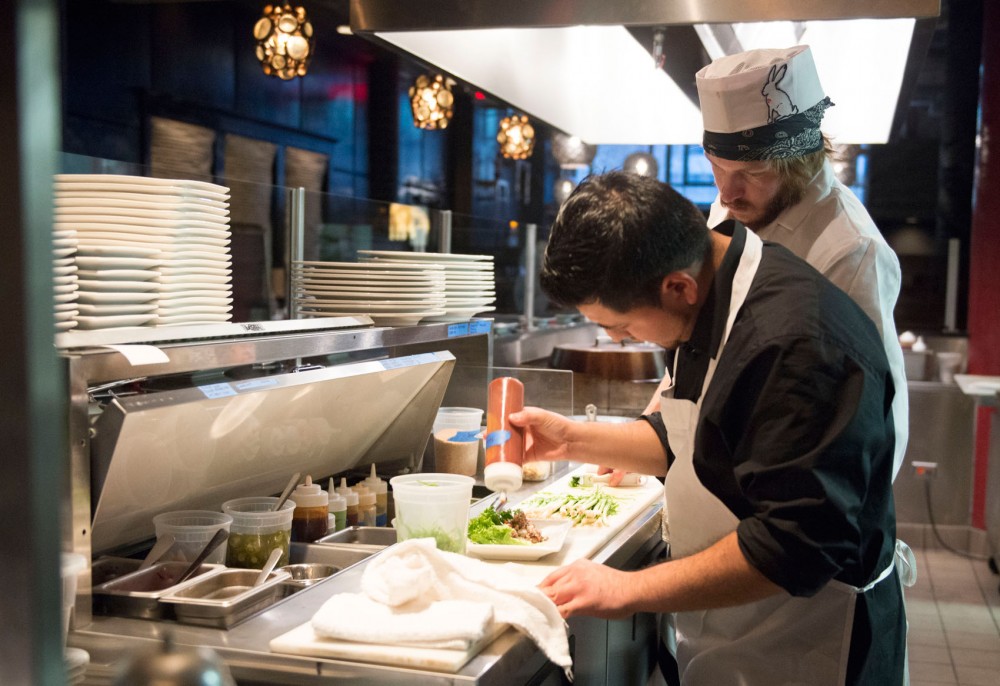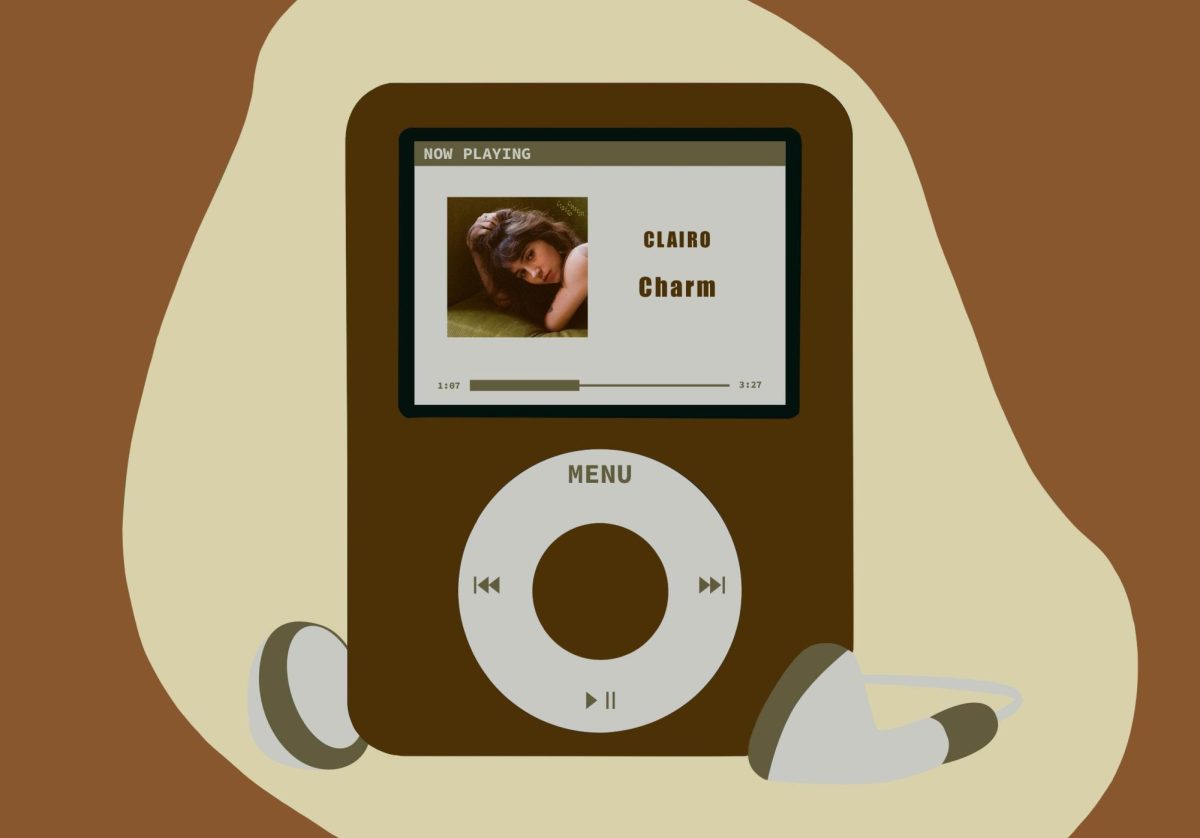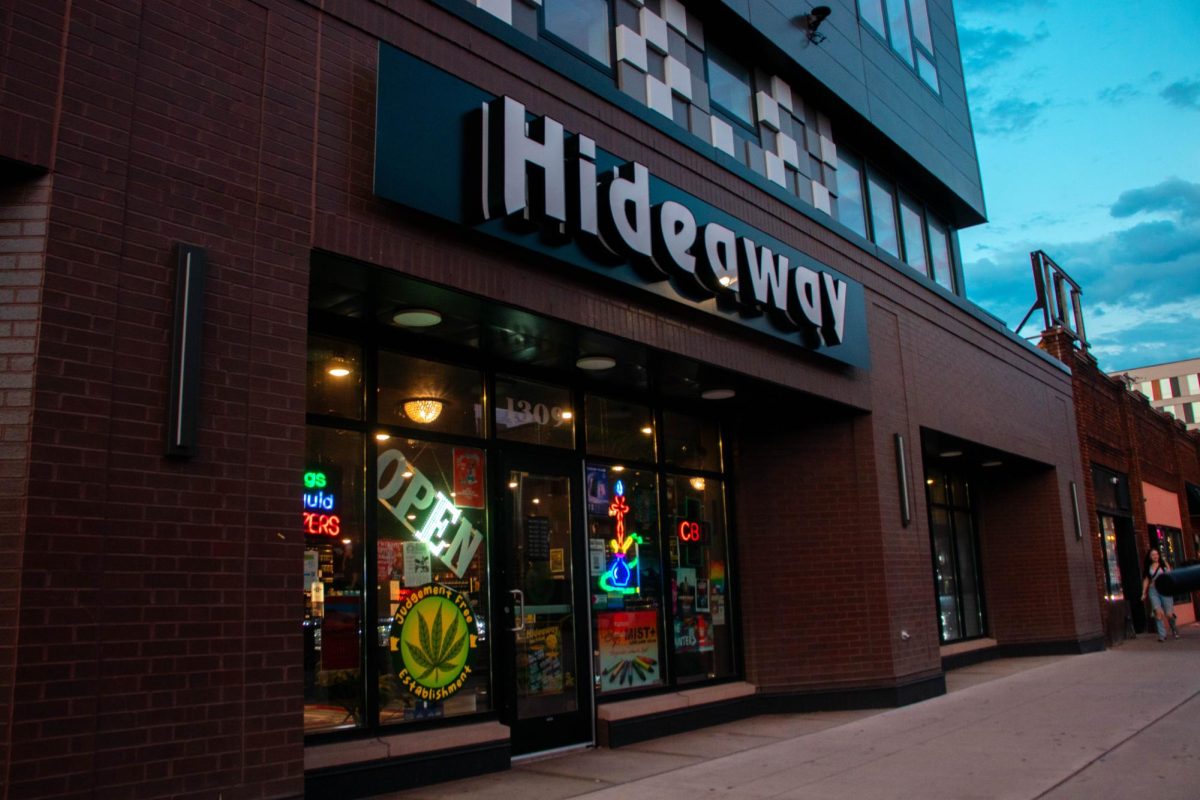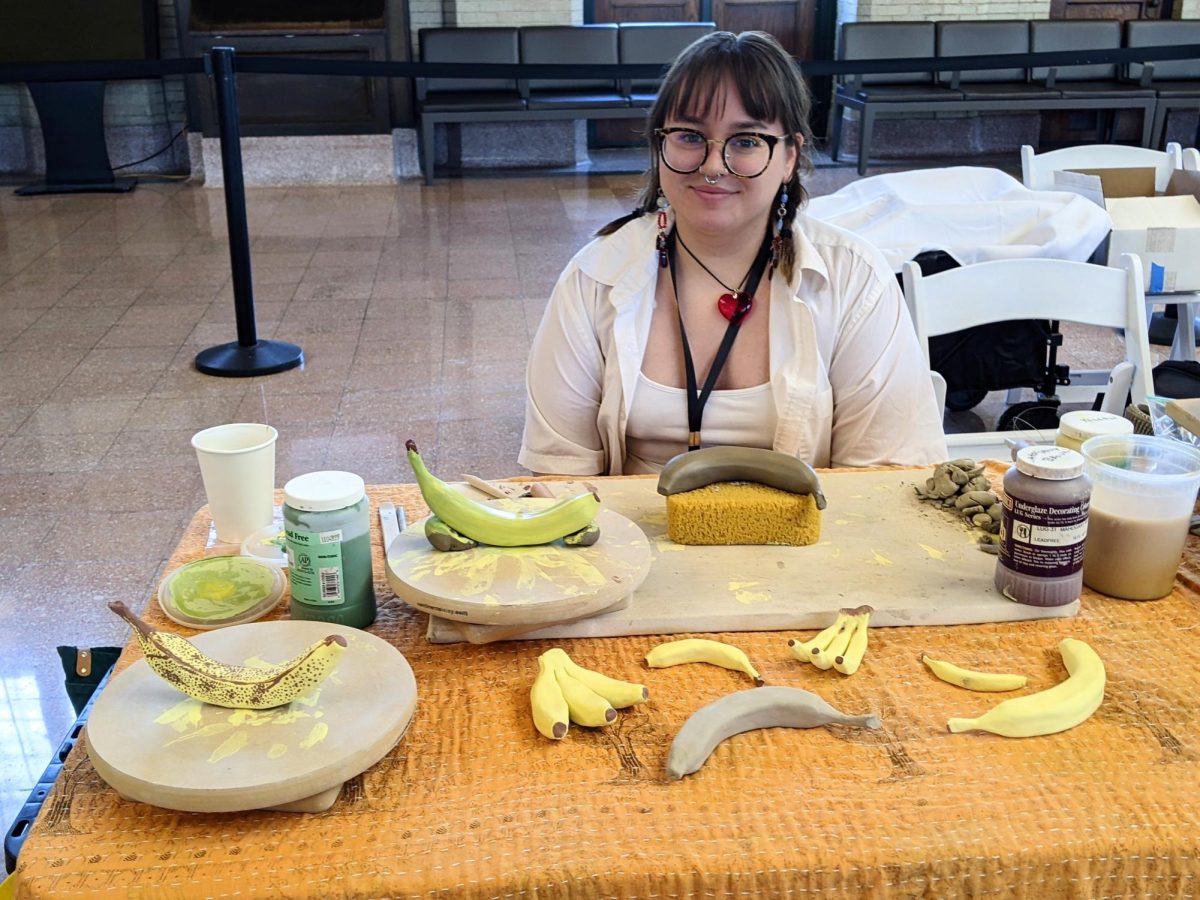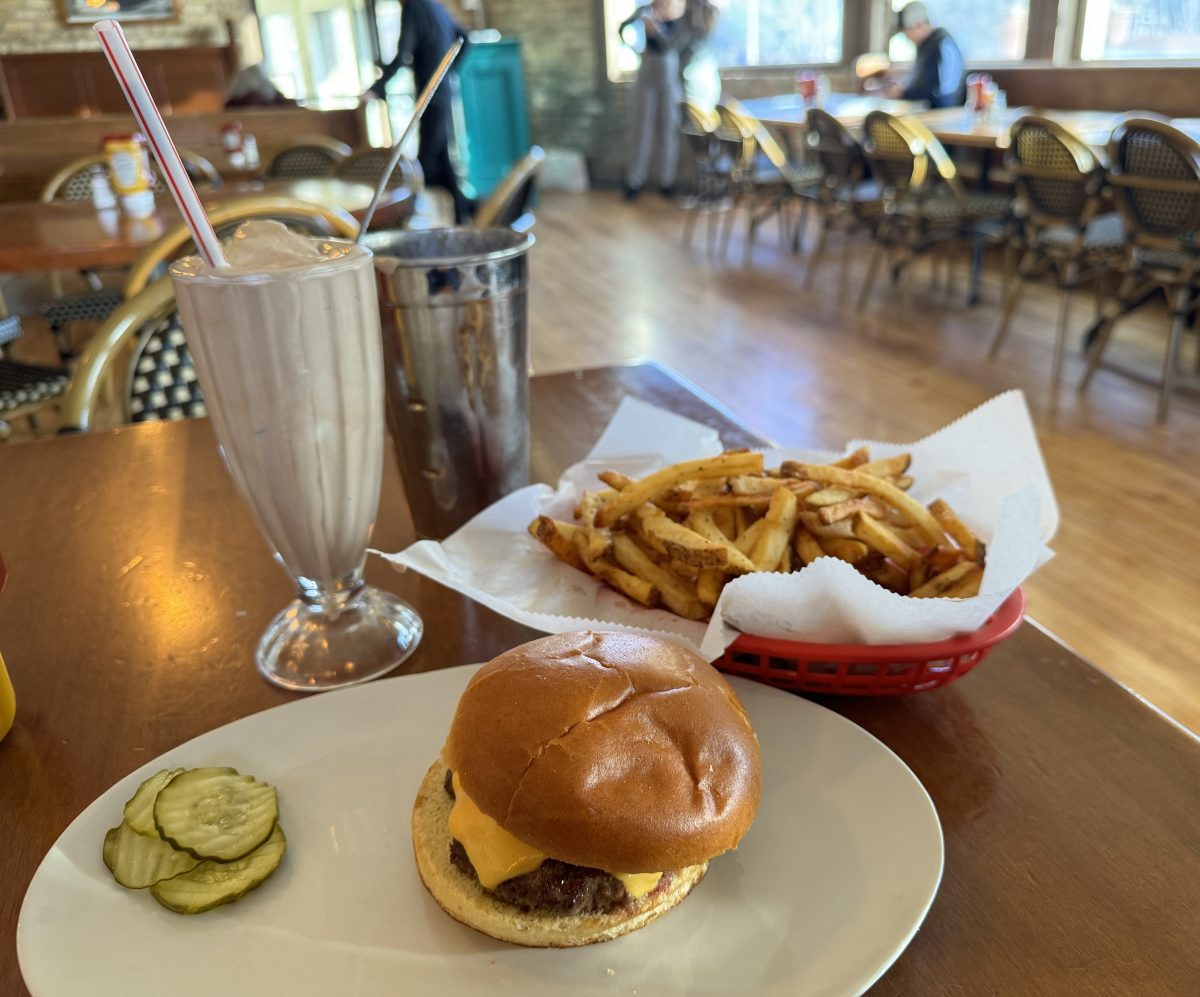Street food stalls on almost every corner in Korea serve a simple yet satisfying dish called ddukbokki (duck-boh-key). It’s a hot food meant to be paired with alcohol, especially on a night out with friends.
But calling it “bar food” and relegating it to the greasy world of burgers, fries and tater tots is a disservice to the Korean street food staple.
Outside of Korea, you might find ddukbokki on either coast of the United States, but it’s rare to find it in restaurants around the Midwest.
Chef Thomas Kim is hoping to change that with the Rabbit Hole, a restaurant he recently opened with his wife Kat Melgaard inside the Midtown Global Market.
“We wanted to bring a little bit of the coastal influence to the Midwest,” Kim said. “In Los Angeles and New York, this would not be that crazy to find.”
The restaurant focuses on Korean food with an American influence and hints of French cooking technique. It strongly mimics the kind of food Kim grew up eating as a young boy with Korean parents on the West Coast.
Kim said he wants to expose people to Korean cuisine while sharing his memories of his parents’ cooking. While most feedback from newcomers has been positive, he said, many Koreans have been vocal about their dislike of his restaurant because it’s “not Korean food.”
“People who are critical are coming from the right place. They want to recreate that important childhood memory of eating their parents’ food,” Kim said. “But this is what I remember. This is how we grew up. Living on the West Coast, you can’t help but bump into a lot of different cultures.”
Kim’s dish, “Duck.. Duck… Duck….” is a play on words that brings an unusual ingredient into a simple meal.
Dduk is made from short-grain sweet rice that’s pounded into dough and formed into long rolls. Kim orders it from an Asian food purveyor in Chicago because “it would be too crazy to make,” he said.
For the dish’s protein, Koreans traditionally use cheaper cuts of beef — like flank, short rib and beef cheeks — or pork tail, ears and neck. Kim said he wanted to bring duck into the dish because if Koreans had more access to that meat, they would probably use it more often.
The dish started with a dollop or two of duck fat in a hot sauté pan, which melted quickly over the heat. Kim dropped in a handful of the dduk cut into coin-sized pieces and cooked it until it became soft and sticky, like Italian gnocchi. He added a ladle of dashi, a simple seaweed, and dried fish stock with a smoky flavor. He let the liquids simmer for a while, braising the dduk.
As the mixture cooked down, he added a handful of homemade kimchi, a traditional Korean condiment made from fermented Napa cabbage, and some onions sautéed and deglazed with bourbon.
Finally, he added the shredded duck meat that was confit’ed, or slowly cooked in its own fat. He topped the dish off with some gochujang — a Korean chili paste made with soy sauce, sesame oil, sugar and spices — then tossed the pan until the paste covered the dduk and duck. Kim plated and garnished the finished product with crispy duck skin and green onions.
It takes the prep cooks two and a half days to cure and braise the duck meat, one day for the gochujang to marinate and nine days for the kimchee to brine and ferment. Kim said on a busy night at the restaurant, he can cook a serving of Duck Duck Duck in about six minutes.
Ddukbokki is a type of food called anju, which means “with drink.” On a typical night out on the town in Korea, most people would include ddukbokki in a trifecta with a small bottle of soju — a distilled, triple-filtered grain alcohol similar to vodka but with half the proof — and maekju (beer).
The inside of The Rabbit Hole is also inspired by pojangmachas, street-cart styled neighborhood drinking spots typically made of corrugated steel and found lumber. After the Korean War, people made do with what they had, Kim said.
These drinking spots were a place where people could meet, have a sense of community and blow off steam while enjoying food and something to drink.
“Nowadays in Korea, you won’t even find that anymore,” Kim said. “Everything is a little ritzier.”
Kim said his dish is a nod to Korean cuisine but is also accessible to people in the Midwest who may be unfamiliar with the flavors.
“Some people don’t want fusion, but I think it’s a dish born out of necessity,” he said.
Korea and the Midwest have similar seasons — they’re equally drastic, with hot summers, miserable winters and changing colors in between.
“At the end of the day, though, we just want people to come in, have some tasty food, enjoy some delicious drinks and be happy about it,” Kim said. “I don’t need to spin this whole message to them.”
What: The Rabbit Hole
When: 4-10 p.m. Monday-Thursday, 4-11 p.m. Friday-Saturday
Where: The Midtown Global Market, 920 E. Lake St., Minneapolis










